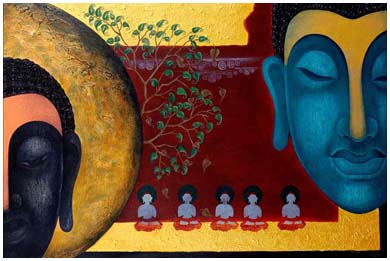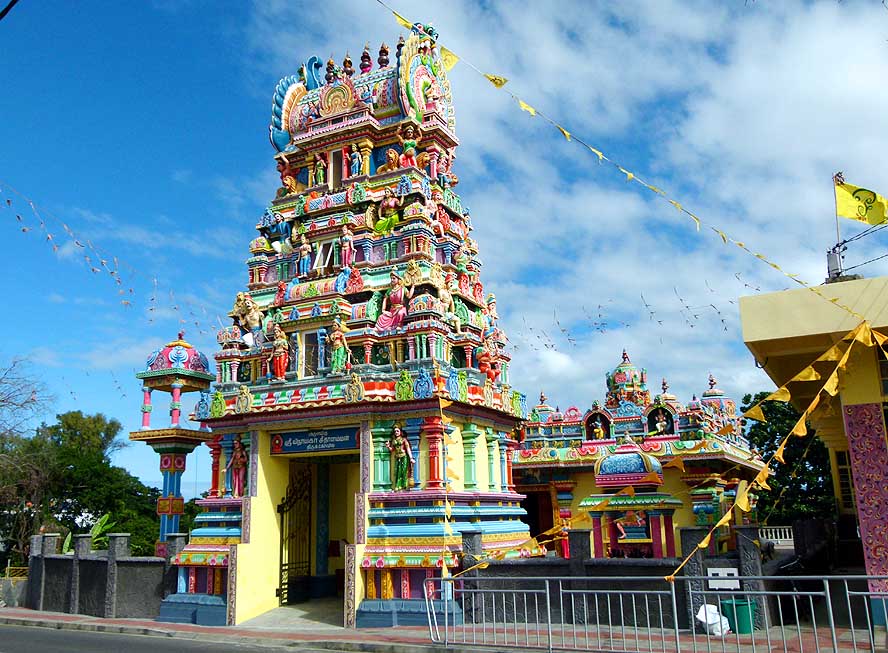The music of
Mauritius has traditionally been influenced by the musical styles of other
African countries and India, but other Western styles have infiltrated their
music as well. There is also quite
a bit of reggae influence. I’m definitely not complaining about that.
One particular
style, however, pretty much dominates Mauritian traditional music: sega (no,
not the video game system). Sega music is pretty much only sung in Creole,
having its roots from the slave trade brought to the islands. It is largely
built on improvisation, and the lyrics talk about life and the struggles of
life. It also tends to be very emotionally charged. Sega music is actually
played throughout much of the Indian Ocean island countries, each with their own
variations.
There’s also a
dance that accompanies sega music. In this dance, the feet stay planted while
the rest of the body moves. Sega music is typically seen as dance music because
the dance is almost inseparable from the music, but it has also been used for
semi-religious ceremonies, like funeral dirges and exorcisms.
There are a few
instruments that are widely heard in sega music as well as in other traditional
forms of music. Percussion instruments seem to dominate the accompaniment, and
instruments like the ravanne (a type of goat skin drum), the maravanne (a type
of rattle), and a type of hand drum called the moutia are often heard in their
music. A type of bow called the bobre is also used. Today, however, modern
instruments such as keyboards and guitars are often played alongside these much
older instruments.
Another popular
style is called seggae, a mix of sega and reggae. A musician known as Kaya is
credited to its creation and making this style popular. Kaya often fought for
human rights, but he later died in prison in 1999.
There are several
other musical styles heard and performed in Mauritius as well. Other genres like
zouk, reggae, and soukous are pretty popular among a lot of people. Rock and
hip-hop are also growing in popularity, especially among the younger
generations. Surprisingly, there are a lot of musicians in this small country.
One musician I listened to who performs more traditional styles is Serge
Lebrasse. The rhythms were almost syncopated or included triplets; it was kind
of hard to tell. (The recordings I listened to was from 1959.) Alain Ramanisum
and Désiré François have many of these same elements but uses far more modern
instruments. Cassiya and Blakkayo are groups that rely on brass instruments (as
do many other bands, I’ve noticed). Although, Blakkayo also has some elements
of dancehall and reggae mixed in there as well. ABAIM uses a variety of
percussion instruments as the instrumental parts, including several kinds of
drums and metallic percussion instruments as well as vocals. Natty Jah
incorporates some reggae into his music but also relies on a more traditional
sound to his music as well. Zotsa falls into this category, but it sounds like
they tend to use a synthesizer, and I’m just not quite a fan of it as I am real
instruments. I could be wrong.
I really liked the
music of Zulu. It borrowed from jazz and blues and other traditional styles. I
really liked what I heard. The Prophecy is another group who borrows from
several styles, like reggae and soul, but what makes them a little different is
that they sing in both English and French/Creole. Jah Mike, if you haven’t
guessed by the name, also mixes reggae, a little bit of hip-hop, and sega. Don
Panik is another reggae artist; he has a few catchy songs. He actually kind of
reminds me of Shaggy at times. I wish there were more on Spotify. Otentikk
Street Brothers is a reggae group who has quite a bit of melodic vocal lines
that add to the drive of the music. I liked what they were doing. Supa Sane
crosses over reggae and hip-hop, but probably leans more toward reggae or
dancehall. I thought they made some pretty catchy songs.
There are even a
few hip-hop artists I came across. Probably the most well known one is Mauritian
All Stars who are actually pretty good. Their flows and cadences are nice, and
the music underneath is generally pretty catchy. And they mix it up. I hate
when I listen to rappers who have 12 songs on an album that all sound the same.
So, at least they don’t fall into that category.
Up next: the food






















